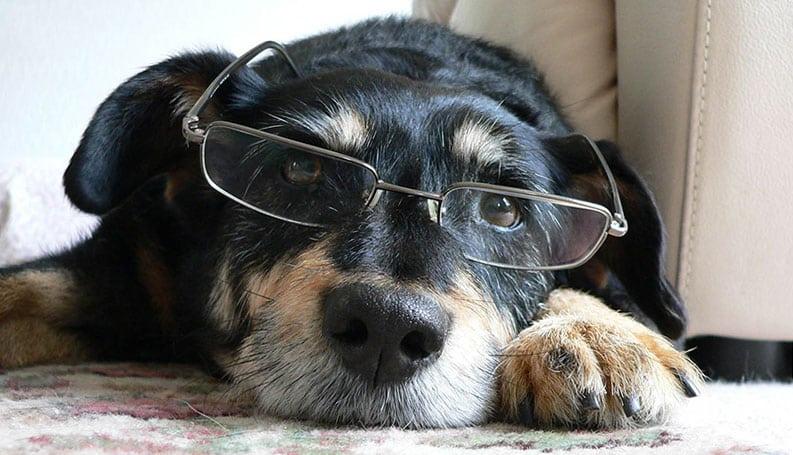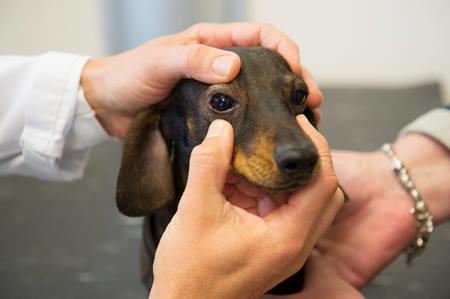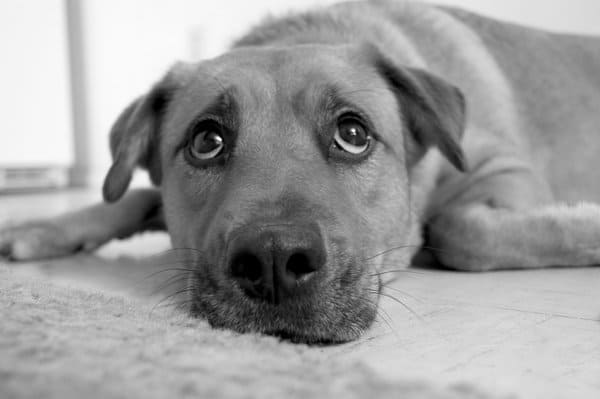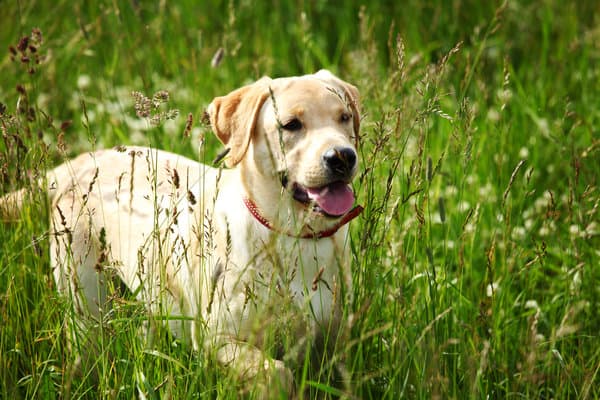It’s always distressing to know a dog is in pain particularly when there’s little you can do to relieve their suffering. It’s one of the reasons owning an elderly canine can be very stressful. As dogs age, their bodies weaken just like ours do and dysplasia may occur. Aches and pains grow common and, besides providing extra vigilant care, there’s not much to be done about it.
Hip dysplasia problems are an issue for older dogs as they are for elderly humans. Older canines may lose some mobility and develop sensitivity in their joints. To a degree, this is a natural consequence of maturity. However, dog owners need to understand the key differences between superficial aches and more serious joint problems.
What is Hip Dysplasia in Dogs?
For instance, hip dysplasia in dogs is quite common and more prevalent in some breeds than others. Is your fur baby suffering from a knock sustained while leaping about the park or do they need medical treatment? It can be hard to tell which is why this article explores the symptoms of hip dysfunction in dogs.
The difference between acute and chronic pain
There are two varieties of hip dysplasia pain and they require different approaches to treatment, the routine usually includes x rays and anti inflammatory treatment. They are chronic pain and acute pain.
Acute hip pain
Acute pain is best described as ‘temporary’ pain. It is caused by injury, accident, or the symptoms of short-term illness. Hip injuries sustained in a clash with another dog are considered acute. If a pet falls while out running or gets hit by a car, they may experience acute hip pain. This type of pain is normally treatable and temporary, though some injuries may be more serious than others.
Acute pain tends to be easy to treat because it’s usually visible. Even if you cannot see an injury right away, your dog may be limping or incessantly licking at a wounded area. These injuries require prompt attention. They may require a trip to the vet and things like cones, bandages, and medication.
Most minor hip sprains and strains can be treated at home. Though, it is probably best to consult a veterinarian just to make sure. Gentle massages, glucosamine treats, careful exercise and lots of love are all canine needs to recover from most types of acute hip pain.
Make a judgment call but ensure it’s an informed one. Leaving a serious problem untreated – even if it’s acute pain – can cause a dog unnecessary suffering and additional health complications.
Chronic hip pain
Chronic hip pain in dogs can be much tougher to diagnose and treat. It’s not caused by accident or injury, so it’s not a matter of healing the damaged body part. The term ‘chronic’ refers to persistent, recurring pain, and discomfort.
It is sometimes caused by degenerative joint conditions such as arthritis. In other cases, it links to a congenital issue called hip dysplasia in which the ball and socket joints of the hips are malformed. It may also be a consequence of long-term illnesses like cancer and autoimmune disorders.
Hip dysplasia is a condition all dog owners should be aware of especially if their canine is a large breed. The problem of hip dysplasia is more prevalent in bigger dogs with larger frames. It is characterized by the progressive disintegration of hip cartilage. As the soft, springy cartilage breaks down, it leaves the bones exposed. Without their natural shock absorber, they grind uncomfortably against one another.
Canine hip dysplasia results in persistent aches and pains within and around the region of the hips. Over time, there may be decreased mobility and further malformation of the joints, in some cases, total hip replacement is needed, less severe cases might respond well to physical therapy, young dogs may also develop hip dysplasia.
Hip dysplasia in dogs is hereditary. Looking at a canine’s older parent can tell you whether they’re likely to develop similar problems one day. On the other hand, immobility and pain aren’t certainties even if a pet does have dysplasia. Recognizing a dog’s risk factors and managing these throughout their younger years goes a long way towards helping them maintain good health.
Hip dysplasia is made worse by obesity, physical inactivity, and poor nutrition. These are factors dog owners can control. They are not predetermined even if hip dysplasia is unavoidable.
In some cases, a hip replacement is recommended, this needs to be evaluated by your veterinarian who will consider your dog’s breed, weight, pain level, and joint laxity. Your veterinarian will look at all clinical signs to help your dog with pain management and might recommend certain surgical procedures specific to dogs with hip dysplasia, less critical cases will benefit from using anti inflammatory drugs to help with range of motion.
How to recognize hip problems in your pet
The most important (and trickiest) task is distinguishing between acute pain and symptoms of hip dysplasia or arthritis. Some signs of hip dysplasia might include the following clinical signs:
Swaying/Lopsided stance
Any change to your dog’s usual gait warrants closer investigation. It can be caused by a hundred different things and, more often than not, it’s a small cut or a graze on their paw. Sometimes though, it’s a sign of deep pain within the hip joints and it might be related to canine hip dysplasia.
Keep your eye out not for an obvious limp but for a wonky stance or bunny hopping. Is your dog leaning awkwardly to one side? Is he favoring one side of his body? Does he struggle to keep his body still when he’s stood stationary? is this behavior months old?
Pain caused by an injured paw or leg will show itself in localized tenderness. If you’ve hurt your foot, you naturally avoid stepping on the wound. Chronic hip pain from hip dysplasia is experienced across the trunk and may render one side of a pet’s body weak.
Difficulty getting upright
Sadly, age comes with decreased mobility, specifically in the hip joint or hind legs. It’s actually very normal for elderly dogs to find getting up and down a struggle. Rising from a prone position, lowering back into a prone position, and climbing stairs can all cause discomfort for older animals as a result of both bone and muscle mass loss.
There is little you can do besides treat an old canine carefully if these issues are a consequence of age. They should not be a chronic problem in younger dogs. If your pet is experiencing discomfort while performing basic movements (such as lying down), they may have chronic joint issues related to dogs hip dysplasia.
Physical inactivity
Sedentary dogs who were formerly very energetic require immediate attention as this clinical sign may indicate hip dysplasia problems. Our furry friends love to play and expend energy. Even elderly canines will do their best to fetch and chase balls. Sudden disinterest in play and exercise is a common sign of injury or chronic pain.
If your pet is happy go lucky one week and then refuse to move by the next, investigate. You may need to take him to the vet for a physical exam.
Unusual position while prone
Sometimes, a dog will relieve tightness and tension in their hip joints by adopting a comforting position. For instance, dogs with hip dysplasia are known to lie on the floor with their back legs very close together.
It looks a little odd and unnatural and that’s because it is. Dogs do it to ease pressure and discomfort from hip dysplasia.
It should be noted this is only worthy of concern if a dog does it repeatedly. Canines are curious animals. Sometimes, they do things because, well, they just feel it. A dog who lies prone like this once or twice is not a worry.
Swollen hips
Sadly, advanced hip dysplasia disease in dogs can lead to visible hip joint deformities. This is not extremely common but still worth looking out for. If your pet’s hip bones start to jut and look overly prominent, take them to the vet.
If they flinch when you touch their hip joint or pelvis region, take them to the vet. It could just be a sprain, but it’s better to be sure, keep in mind if your dog is a large breed, the risk is higher.
What to do if your dog is suffering from hip pain or sensitivity
The only way to know for certain if a dog has hip problems is to visit the vet. They can use sophisticated diagnostic equipment to find the root of the discomfort, in extreme cases, a total hip replacement may be suggested. You can do all the observing you like at home. Without a scan, you can’t take the next step forward. If you dream of your dog being pain free, visit your veterinarian so that he can evaluate all the clinical signs.
The first thing a vet will do is perform an x-ray of the animal’s hips. This may involve the prescription of a sedative, but it is a safe and non-invasive procedure. While the dog is sedated, they may also perform a hip laxity exam. This involves manual manipulation of the joints to ascertain mobility.
In some cases, they’ll take a blood sample for further testing. You’ll probably need to wait a few days or a week for the results. If tests come back positive for hip dysplasia, arthritis, or another degenerative joint condition, they can advise you on the best forms of care.
Can you treat a dog’s hip problems at home?
There are many reasons a dog owner might want to avoid surgery and the expense is just one. For older dogs especially, surgery can be a dangerous option. The procedure may be routine but there is always a risk posed by anesthesia. The older or sicker the animal, the greater the risk.
This doesn’t mean you should automatically reject the notion of surgery. Some health problems degenerate to such a degree that a dog has no quality of life without surgical intervention. It’s an issue that needs to be discussed with your veterinary professional.
If you’re keen to avoid surgery, discuss this directly with the vet. There may be alternatives you can try at home. It really depends on the animal’s unique circumstances and factors such as age and severity of sickness. For instance, dogs of advanced age may have serious conditions that can be fixed with surgery. It doesn’t mean surgery is the best option particularly if it’s very risky.
The hope is that whatever your dog’s diagnosis, you can take him home, keep him comfortable and treat him in safe, familiar surroundings.
Here are some things you should focus on if your dog has a chronic or degenerative health condition.
Nutrient rich diet
The single best thing you can do for a dog with chronic health problems is feed a nutritious diet. Food really is medicine. They need plenty of vitamins and minerals to regenerate damaged tissues, maintain a healthy immune system and strengthen their skeleton. Few things impact health as dramatically as diet.
Dogs with joint conditions need to be fed whole meat regardless of your own dietary preferences. It’s essential for health. Lean meat provides nutritious fats, key amino acids, minerals, and vitamins. You don’t have to feed your pet organ meat – some owners dislike handling it – but know it’s packed with micronutrients.
Don’t forget the fresh fruits and vegetables. They provide a great deal of hydration and continue topping up those valuable vitamins and minerals. Some fresh produce (like onions and avocadoes) is mildly toxic for canines. Just do a little research if you’re serving produce from the supermarket. Canned dog foods have already been tested and approved.
Low impact movement
Exercise remains vital even for dogs with impaired mobility. It can be distressing to watch a canine hobble or limp around, but immobility is the fastest route to poor health. Choose activities that are suitable but do not pander to your pet too much.
They need to stay mobile whether they want to move or not. Approach them as you might a child with a superficial injury. They don’t know they ‘can’t’ until you allow them not to try. Reduce the pace when walking, allow more time for strolls and consider taking your dog swimming. Water activities are wonderful for pets with hip problems because the buoyancy takes the pressure off their joints.
Health supplements
Nutrition is always important, and you should do everything you can to feed your dog a balanced diet. It won’t be easy all the time. Humans are the smartest mammals on the planet and we still suffer from nutritional deficiencies because we don’t eat the right things. Supplementation allows us to bridge the gaps and cheat our way to a strong body.
The same options are available to dog owners. Supplementation is a superb way to ensure your pet always gets the nutrients they need.
Here are some common canine supplements:
Glucosamine
Yes, glucosamine supplements can be given to dogs as well as people. It’s a potent nutrient designed to accelerate cartilage production. As the breakdown of cartilage is a primary symptom of hip dysplasia in dogs, this supplement is strongly recommended.
Glucosamine is naturally produced in the body, but levels decline with age. Thus, supplementation becomes very important for older animals.
MSM
MSM is short for methylsulfonylmethane (don’t worry, nobody calls it that). It’s a naturally occurring sulphuric nutrient known for inhibiting pain receptors. It is given to dogs with hip problems as a pain reliever and a supplement for managing inflammation. It works by lessening a dog’s ability to process pain in their nerve centers.
Omega-3
Countless studies have demonstrated the benefits of fish oils for improved joint health and functions. It’s true in people and in canines too. According to one study, dosing dogs with omega-3 oils led to significant reductions in pain, immobility, and stiffness. One added advantage is omega-3 oils also enrich fur, eye and brain cells.
The final word on hip dysplasia in dogs
Joint problems are an unavoidable part of life for some dog breeds. Just knowing a pet is vulnerable can be very distressing for owners. It’s difficult to know your canine is likely to develop congenital issues.
However, you must keep in mind the happy go lucky nature of dogs. Yes, they experience pain and can struggle sometimes. Without a conscious understanding of sickness though, they are rarely anguished.
They have you, their favorite toys, and a daily routine they adore. Even for a dog with pain issues, life can be sweet.
Sources
- https://www.akc.org/expert-advice/health/hip-dysplasia-in-dogs/
- https://iheartdogs.com/the-18-breeds-with-the-most-risk-of-hip-dysplasia-is-your-dog-at-risk/
- https://www.certapet.com/hip-dysplasia-in-dogs/#Causes_of_Hip_Dysplasia_or_Hip_Joint_Pain
- https://www.caninejournal.com/canine-hip-dysplasia/
- https://toegrips.com/medicine-hip-dysplasia-dogs/
- https://lessonsfromaparalyzeddog.com/mobility-brace-for-dogs-with-arthritis-and-hind-end-weakness/
- https://www.thedrakecenter.com/services/dogs/laser-therapy-for-dogs
- https://vetnutrition.tufts.edu/2017/10/dogobesity/
- https://vcahospitals.com/know-your-pet/acupuncture-acupressure-for-dogs








